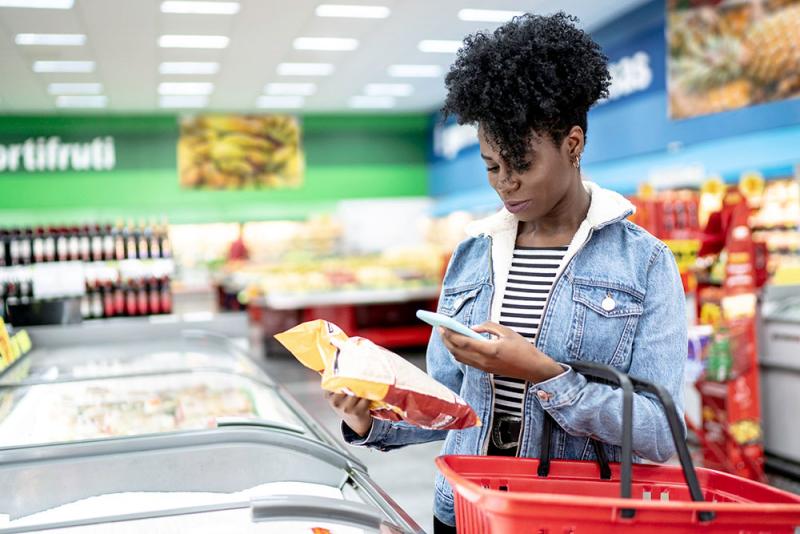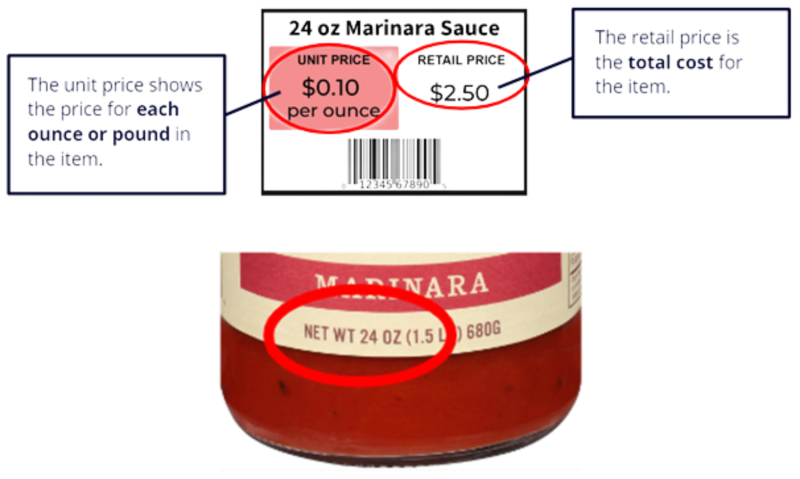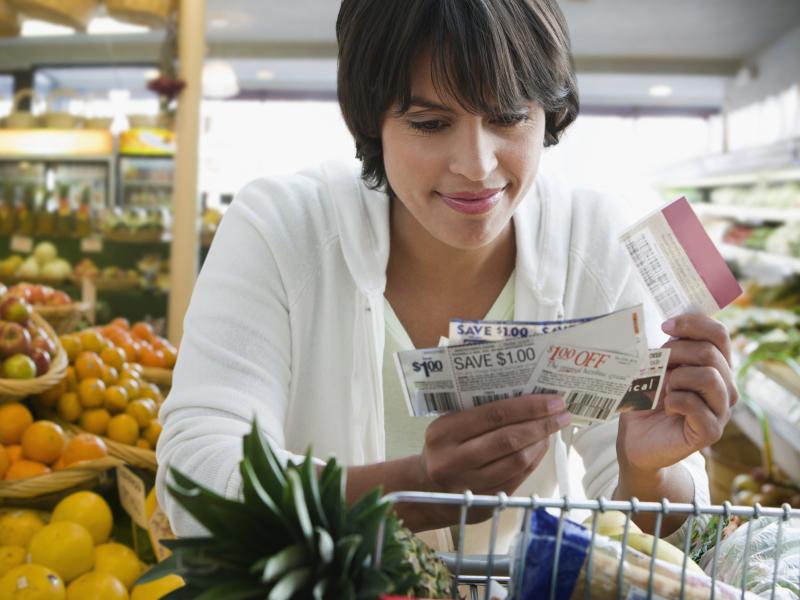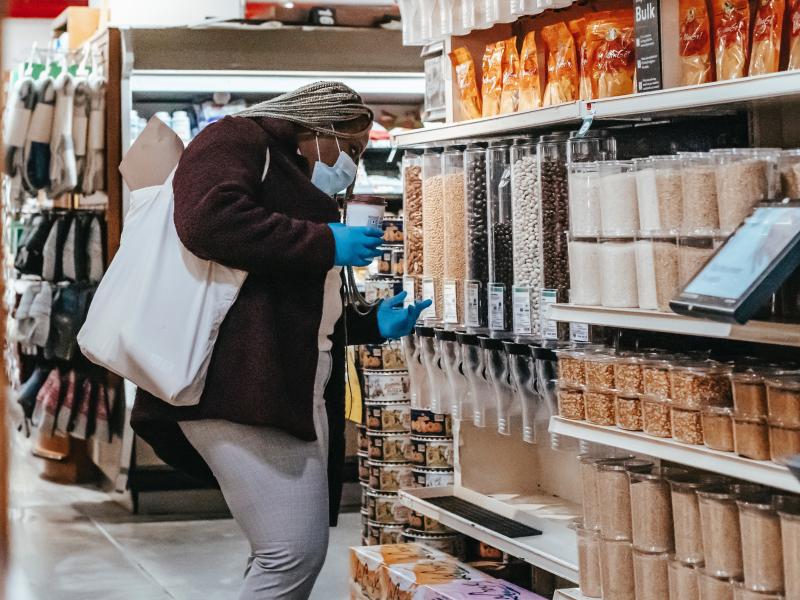Grocery Store Tactics
Food companies use different tricks to get you to buy foods you would otherwise not choose. Some of these tactics are easy to spot, like bright pictures and fancy designs on food packages. Others are harder to notice, like items that are placed in specific places in the store. Other times, they use buzzwords like "natural", which might not mean what you think they do.
Play the Shopping Skills Game
Play the Unit Pricing Game
Look up and down. When you shop, don’t just focus on the middle shelves. Take a look at the top and bottom shelves too. Sometimes, less expensive items may be on the lower or higher shelves. Other times, colorful, kid-friendly products are put lower down so children can see them.
The delicious smell of fresh baked goods. Have you ever noticed the smell of fresh cookies or bread when you walk into the store? That’s not by accident. Stores use smells to make you feel hungry and encourage you to buy more.
Avoid last-minute impulse buys. Grocery store checkout aisles often feature many snacks and drinks, which can encourage impulse purchases. It’s helpful to stay focused on your shopping list to avoid adding items you hadn’t planned for.

End Caps Might Not Be the Best Deal. Stores often put big displays at the ends of aisles to show off certain products. They might make it seem like a good deal by using big price tags that look like sales. But sometimes the price isn’t any better than the normal cost.
Consider your options before you buy. Sales might look like a good deal, but it's important to think if you really need the item. Some things on sale could be close to their expiration date, so make sure you can use them before they go bad. "Buy One, Get One" offers sound great, but only buy them if you'll actually be able to use both items. For bulk deals, like "10 items for $10," check the offer details. Sometimes, you don't have to buy all 10 to get the deal. In that case, you can buy just what you and your family will be able to use.
Look beyond buzzwords. Food labels often use words like “healthy” or “natural” to make a product sound better. Since these words aren’t strictly regulated, it’s important to check the Nutrition Facts label to see the product is right for you and your family. Visit the Nutrition Facts Labels page to learn more.

Making the Most of Your Shopping Trip
- Eat before you shop: Having a snack before going to the store helps you avoid buying things just because you're hungry.
- Stick to your list: If you're on a tight budget, make a shopping list and try to stick to it. Visit You can find tips for making a list on the Make a Plan page.
- Shop quickly: The faster you shop, the less you’ll spend. Focus on your list to avoid getting distracted.
Coupons, Apps and Loyalty Programs
Coupons, store loyalty programs, and apps are great ways to save money. Before shopping, check the store's website for digital coupons or sign up for any apps that can help you find deals. You can also find coupons in newspapers, mail, or online.
Coupons, Apps and Loyalty Programs: Know Before You Go
- Check expiration dates: Make sure your coupons are still good before you head to the store.
- Use free programs: Make sure the store apps or loyalty programs you sign up for are free. Some have hidden costs or additional fees for access to certain features.
- Consider your needs. A sale isn’t always the best deal, especially if you aren't sure if you can use the item before it expires.
- Compare brand prices: Store brands are often cheaper than name brands, even with a coupon.
- Check for coupon doubling: Some stores double the value of coupons at certain times of the year. Ask your store if they do this.
Unit Pricing
The unit price is a great tool in the grocery store. You can save money by comparing prices of similar items to find the best deal. The unit price tells you the cost of an item based on the weight or volume of that item.

What is Unit Pricing?
The unit price is shown on the shelf price tag. You’ll see two prices: the total cost (or “retail price”) and the unit price. The unit price is the cost for a specific amount of the product, like per ounce or per pound. For example, a price tag on a 24-ounce jar of pasta sauce might show the unit price as the price per ounce of sauce.
To calculate the unit price of any item, divide the total cost (the retail price) by the weight or volume of the item. Here's an example: If you have a 10 oz can of beans that costs $1.50, you'll divide $1.50 by 10 ounces. $1.50 ÷ 10 = $0.15 per ounce.
Compare to find the best deal. Once you know how to find the unit price, you can compare different sizes or brands to find the best value. If you are using a coupon, make sure to subtract the coupon value from the total cost before doing the calculation.

How Unit Pricing Saves Money
Unit pricing helps you compare the cost of different sizes or brands of the same item. It tells you exactly how much you’re paying per ounce or per pound, so you don’t have to guess which package is the best deal.
Here are some things to keep in mind when comparing unit prices:
- Larger packages are often cheaper. Bigger packages tend to have a lower unit price, but this is only a good deal if you can use it all before it spoils. If some of the product will go bad, it may not save you money in the end.
- Bigger isn’t always better. Sometimes smaller packages have the same unit price and sometimes the smaller packages even end up with a lower unit price! So check the unit price every time.
- Sales and coupons change the price. If an item is on sale or you’re using a coupon, you’ll often need to figure out the new unit price yourself. Don’t forget to adjust the unit price when there’s a discount on the total price.




